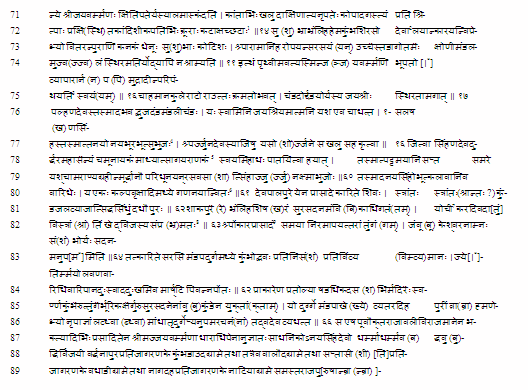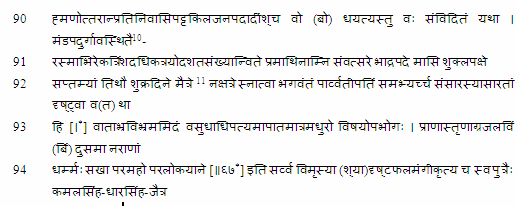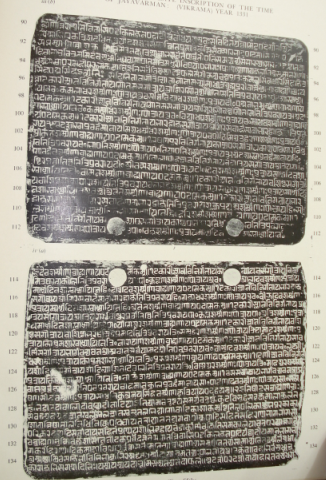| |
North
Indian Inscriptions |
| |
|
|
|
INSCRIPTIONS OF THE PARAMARAS OF MALWA

Third Plate : Second Side

_________________________________________________________________________
[1] Here the reference is to the autumn season when the star Agastya becomes visible and which is the proper time for a king for marching agaist his enemies. Hence the idea is that those women who get no information about their husbands (kāndiśīka) naturally curse the star, who is also the master of the south.
[2] This akshara which was originally omitted, is written in a smaller form just above the place where it is to be supplied.
[3] Dr. Sircar observed that this word means the same thing as saṁvyavaharati of other inscriptions, although this meaning of the verb is not found in the lexicons.
[4] Originally tsū, with the mātrā, corrected.
[5] Read माद्यत्. The first letter of the name has a crescent above, probably intended for an anusvāra as it is visible in the impression; and in that case we can take this person to be evidently identical with the military officer Saṅga for which see n. in the article above.
[6] As in some other cases, this akshara has also the sign of anusvāra above; it was later on scratched but is still faintly visible.
[7] Probably धी was originally engraved. The first foot of this verse offends against the metre.
[8] The particle showing the utprekshā is wrongly placed. Read दातुमिव, which, however, would not suit the metre.
[9] The first letter of this verse is written as the symbol in the beginning. समया means near; it governs the accusative.
[10] A blank space for one akshara was left at the end of this line obviously to avoid writing on the crack here.
[11] I.e., Anurādhā. The ga in bhagavaṁtaṁ that follows was originally engraved as ma and later on corrected.
.......................CORPUS INSCRIPTIONUM INDICARUM
VOL.VII .................................................................................PLATE LXII
MANDHATA COPPER-PLATE INSCRIPTION OF THE TIME OF JAYAVARMAN
(VIKRAMA) YEAR 1331

|
\D7
![]()
|










